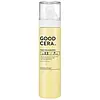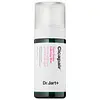What's inside
What's inside
 Key Ingredients
Key Ingredients

 Benefits
Benefits

 Concerns
Concerns

 Ingredients Side-by-side
Ingredients Side-by-side

Water
Skin ConditioningMethylpropanediol
SolventPentylene Glycol
Skin ConditioningGlycerin
HumectantDiphenyl Dimethicone
EmollientTriethylhexanoin
MaskingPolyglyceryl-10 Myristate
Skin ConditioningXanthan Gum
EmulsifyingAmaranthus Caudatus Seed Extract
Skin ConditioningUlmus Davidiana Root Extract
Skin ConditioningCentella Asiatica Extract
CleansingFicus Carica Fruit Extract
HumectantBacillus Ferment
Skin ConditioningEthylhexylglycerin
Skin ConditioningSodium Citrate
BufferingHydrogenated Lecithin
EmulsifyingCarbomer
Emulsion StabilisingCitric Acid
BufferingDisodium EDTA
Dipropylene Glycol
HumectantButylene Glycol
HumectantDecyl Glucoside
CleansingCitrus Aurantium Bergamia Fruit Oil
MaskingAlteromonas Ferment Filtrate
HumectantLavandula Angustifolia Oil
MaskingChamomilla Recutita Flower Oil
MaskingCitrus Aurantium Dulcis Oil
MaskingCymbopogon Schoenanthus Oil
MaskingPelargonium Graveolens Flower Oil
MaskingSodium Lauroyl Lactylate
EmulsifyingGlycerylamidoethyl Methacrylate/Stearyl Methacrylate Copolymer
HumectantPhytosphingosine
Skin ConditioningCholesterol
EmollientCeramide NP
Skin ConditioningCeramide AP
Skin ConditioningCeramide EOP
Skin ConditioningWater, Methylpropanediol, Pentylene Glycol, Glycerin, Diphenyl Dimethicone, Triethylhexanoin, Polyglyceryl-10 Myristate, Xanthan Gum, Amaranthus Caudatus Seed Extract, Ulmus Davidiana Root Extract, Centella Asiatica Extract, Ficus Carica Fruit Extract, Bacillus Ferment, Ethylhexylglycerin, Sodium Citrate, Hydrogenated Lecithin, Carbomer, Citric Acid, Disodium EDTA, Dipropylene Glycol, Butylene Glycol, Decyl Glucoside, Citrus Aurantium Bergamia Fruit Oil, Alteromonas Ferment Filtrate, Lavandula Angustifolia Oil, Chamomilla Recutita Flower Oil, Citrus Aurantium Dulcis Oil, Cymbopogon Schoenanthus Oil, Pelargonium Graveolens Flower Oil, Sodium Lauroyl Lactylate, Glycerylamidoethyl Methacrylate/Stearyl Methacrylate Copolymer, Phytosphingosine, Cholesterol, Ceramide NP, Ceramide AP, Ceramide EOP
Water
Skin ConditioningDipropylene Glycol
HumectantButylene Glycol
HumectantEryngium Maritimum Callus Culture Filtrate
Skin ConditioningNiacinamide
SmoothingPentylene Glycol
Skin ConditioningHouttuynia Cordata Extract
Skin ConditioningIlex Aquifolium Leaf Extract
Skin ConditioningAchillea Millefolium Oil
Cleansing1,2-Hexanediol
Skin ConditioningErythritol
HumectantChondrus Crispus Extract
Skin ConditioningC12-14 Pareth-12
EmulsifyingSaccharum Officinarum Extract
MoisturisingStreptococcus Thermophilus Ferment
HumectantPanthenol
Skin ConditioningCaprylyl Glycol
EmollientEthylhexylglycerin
Skin ConditioningLavandula Angustifolia Oil
MaskingAdenosine
Skin ConditioningGlycerin
HumectantDna
Skin ConditioningDiphenyl Dimethicone
EmollientCitrus Aurantium Bergamia Fruit Oil
MaskingCarbomer
Emulsion StabilisingTriethylhexanoin
MaskingTromethamine
BufferingDisodium EDTA
Melia Azadirachta Leaf Extract
Skin ConditioningHydrogenated Lecithin
EmulsifyingHedera Helix Extract
AntimicrobialMelia Azadirachta Flower Extract
Skin ConditioningMadecassoside
AntioxidantAsiatic Acid
Skin ConditioningAsiaticoside
AntioxidantMadecassic Acid
Skin ConditioningCalcium Chloride
AstringentCentella Asiatica Extract
CleansingMagnesium Sulfate
Water, Dipropylene Glycol, Butylene Glycol, Eryngium Maritimum Callus Culture Filtrate, Niacinamide, Pentylene Glycol, Houttuynia Cordata Extract, Ilex Aquifolium Leaf Extract, Achillea Millefolium Oil, 1,2-Hexanediol, Erythritol, Chondrus Crispus Extract, C12-14 Pareth-12, Saccharum Officinarum Extract, Streptococcus Thermophilus Ferment, Panthenol, Caprylyl Glycol, Ethylhexylglycerin, Lavandula Angustifolia Oil, Adenosine, Glycerin, Dna, Diphenyl Dimethicone, Citrus Aurantium Bergamia Fruit Oil, Carbomer, Triethylhexanoin, Tromethamine, Disodium EDTA, Melia Azadirachta Leaf Extract, Hydrogenated Lecithin, Hedera Helix Extract, Melia Azadirachta Flower Extract, Madecassoside, Asiatic Acid, Asiaticoside, Madecassic Acid, Calcium Chloride, Centella Asiatica Extract, Magnesium Sulfate
 Reviews
Reviews

Ingredients Explained
These ingredients are found in both products.
Ingredients higher up in an ingredient list are typically present in a larger amount.
Butylene Glycol (or BG) is used within cosmetic products for a few different reasons:
Overall, Butylene Glycol is a safe and well-rounded ingredient that works well with other ingredients.
Though this ingredient works well with most skin types, some people with sensitive skin may experience a reaction such as allergic rashes, closed comedones, or itchiness.
Learn more about Butylene GlycolCarbomer is a polymer of acrylic acid. Its main role is to create a gel consistency.
A high amount of carbomer can cause pilling or balling up of products. Don't worry, most products contain 1% or less of carbomer.
Centella Asiatica Extract (Centella) is derived from an herb native to Southeast Asia. It is famous for its anti-inflammatory and soothing properties.
Centella is rich in antioxidants and amino acids, such as Madecassic Acid and Asiaticoside.
Studies show the compounds in centella help with:
The combination of all these properties makes centella effective at soothing, hydrating, and protecting the skin.
Other great components of centella include Vitamin A, vitamin C, several B vitamins, and Asiatic Acid.
Fun fact: Centella has been used as a medicine and in food for many centuries. As a medicine, it is used to treat burns, scratches, and wounds.
Learn more about Centella Asiatica ExtractCitrus Aurantium Bergamia Fruit Oil is the oil from the bergamot orange. It is native to Italy.
This ingredient is used to add fragrance to products. It contains limonene, linalool, and linalyl acetate.
The term 'fragrance' is not regulated in many countries. In many cases, it is up to the brand to define this term. For instance, many brands choose to label themselves as "fragrance-free" because they are not using synthetic fragrances. However, their products may still contain ingredients such as essential oils that are considered a fragrance.
When used topically, Citrus Aurantium Bergamia Fruit Oil is a photosensitizer due to its furanocoumarins. Photosensitizers make the skin and eyes much more sensitive to sunlight. Photosensitizers are linked to skin cancer.
However, more cosmetics using Citrus Aurantium Bergamia Fruit Oil are removing the furanocoumarins.
Bergamot oil was also found to have anti-inflammatory, antibacterial and antifungal properties.
Learn more about Citrus Aurantium Bergamia Fruit OilDiphenyl Dimethicone is a type of silicone.
Dipropylene Glycol is a synthetically created humectant, stabilizer, and solvent.
This ingredient helps:
Dipropylene glycol is technically an alcohol, but it belongs to the glycol family (often considered part of the ‘good’ alcohols). This means it is hydrating and gentle on skin unlike drying solvent alcohols like denatured alcohol.
As a masking agent, Dipropylene Glycol can be used to cover the smell of other ingredients. However, it does not have a scent.
Studies show Dipropylene Glycol is considered safe to use in skincare.
Learn more about Dipropylene GlycolDisodium EDTA plays a role in making products more stable by aiding other preservatives.
It is a chelating agent, meaning it neutralizes metal ions that may be found in a product.
Disodium EDTA is a salt of edetic acid and is found to be safe in cosmetic ingredients.
Learn more about Disodium EDTAEthylhexylglycerin (we can't pronounce this either) is commonly used as a preservative and skin softener. It is derived from glyceryl.
You might see Ethylhexylglycerin often paired with other preservatives such as phenoxyethanol. Ethylhexylglycerin has been found to increase the effectiveness of these other preservatives.
Glycerin is already naturally found in your skin. It helps moisturize and protect your skin.
A study from 2016 found glycerin to be more effective as a humectant than AHAs and hyaluronic acid.
As a humectant, it helps the skin stay hydrated by pulling moisture to your skin. The low molecular weight of glycerin allows it to pull moisture into the deeper layers of your skin.
Hydrated skin improves your skin barrier; Your skin barrier helps protect against irritants and bacteria.
Glycerin has also been found to have antimicrobial and antiviral properties. Due to these properties, glycerin is often used in wound and burn treatments.
In cosmetics, glycerin is usually derived from plants such as soybean or palm. However, it can also be sourced from animals, such as tallow or animal fat.
This ingredient is organic, colorless, odorless, and non-toxic.
Glycerin is the name for this ingredient in American English. British English uses Glycerol/Glycerine.
Learn more about GlycerinHydrogenated Lecithin is created from the hydrogenation of lecithin (a group of phospholipids). Hydrogenation is a chemical reaction between hydrogen and another element.
This ingredient is an emollient and emulsifier. As an emollient, it helps soften skin by trapping moisture within. As an emulsifier, it prevents oil and water ingredients from separating.
Lavandula Angustifolia Oil is more commonly known as lavender essential oil. It is considered a fragrancing ingredient.
Lavender imparts a famous scent. While the smell is lovely, this ingredient and may sensitize skin in topical products. This is because about 85% of the oil is made up of linalool and linalyl acetate.
When exposed to air, these two compounds become strong allergens. This ingredient exhibits cytotoxicity at low concentrations; amounts of 0.25% have been shown to damage skin cells.
A study from Japan found this ingredient caused lavender sensitivity after widespread exposure.
Lavender essential oil has some antimicrobial, antibacterial, and anti-inflammatory properties. However, the cons of this ingredient may outweight the pros.
More research is needed to confirm lavender essential oil's effects when used in aromatherapy.
Lavandula Angustifolia is known as the English Lavender and famous for creating purple fields in Provence, France.
Learn more about Lavandula Angustifolia OilPentylene glycol is typically used within a product to thicken it. It also adds a smooth, soft, and moisturizing feel to the product. It is naturally found in plants such as sugar beets.
The hydrophilic trait of Pentylene Glycol makes it a humectant. As a humectant, Pentylene Glycol helps draw moisture from the air to your skin. This can help keep your skin hydrated.
This property also makes Pentylene Glycol a great texture enhancer. It can also help thicken or stabilize a product.
Pentylene Glycol also acts as a mild preservative and helps to keep a product microbe-free.
Some people may experience mild eye and skin irritation from Pentylene Glycol. We always recommend speaking with a professional about using this ingredient in your routine.
Pentylene Glycol has a low molecular weight and is part of the 1,2-glycol family.
Learn more about Pentylene GlycolTriethylhexanoin is created from glycerin and 2-ethylhexanoic acid. It is a solvent and emollient.
As a solvent, Triethylhexanoin helps dissolve ingredients to stable bases or help evenly distribute ingredients throughout the product.
It is also an emollient and helps condition the skin.
Learn more about TriethylhexanoinWater. It's the most common cosmetic ingredient of all. You'll usually see it at the top of ingredient lists, meaning that it makes up the largest part of the product.
So why is it so popular? Water most often acts as a solvent - this means that it helps dissolve other ingredients into the formulation.
You'll also recognize water as that liquid we all need to stay alive. If you see this, drink a glass of water. Stay hydrated!
Learn more about Water